In silico screening of naturally derived dietary compounds as potential butyrylcholinesterase inhibitors for Alzheimer's disease treatment
- PMID: 40382441
- PMCID: PMC12085675
- DOI: 10.1038/s41598-025-98092-y
In silico screening of naturally derived dietary compounds as potential butyrylcholinesterase inhibitors for Alzheimer's disease treatment
Abstract
Alzheimer's disease (AD) is a progressive neurodegenerative condition that causes a substantial decline in cognitive functions and affects memory, thinking abilities, and daily behavior. The most prominent hallmark of AD pathogenesis is the formation of amyloid-β plaques, among other associated pathways such as neurofibrillary tangles, mitochondrial dysfunction, neuroinflammation, and oxidative stress. Butyrylcholinesterase (BuChE), an acetylcholine-degrading enzyme, plays a critical role in the progression of Alzheimer's disease, particularly through its involvement in amyloid-β plaque formation. Thus, the inhibition of BuChE is considered a valuable therapeutic strategy for the management of AD. The present study aimed to identify potential bioactive chemicals from naturally occurring dietary compounds that could improve neurocognitive function and appear as a viable treatment for AD by inhibiting the function of BuChE. A small library of 44 natural dietary chemicals from a variety of dietary plants was subjected to comprehensive in silico studies, including molecular docking, molecular mechanics generalized born surface area (MM-GBSA) calculations, pharmacokinetics assessments, toxicity profiles, molecular dynamics (MD) simulation, and density functional theory (DFT) analysis. These studies revealed that CID 129886986 and CID 115269 showed stronger binding affinities with drug-likeness and no toxicity than the FDA-approved standard drug, Donepezil. Additionally, they exhibited strong structural stability with fewer fluctuations throughout the simulation, making them promising candidates for Alzheimer's disease treatment.
Keywords: Alzheimer’s disease; Butyrylcholinesterase; Density functional theory; MM-GBSA; Molecular docking; Molecular dynamics simulations; Pharmacokinetics.
© 2025. The Author(s).
Conflict of interest statement
Declarations. Competing interests: The authors declare no competing interests.
Figures
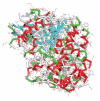
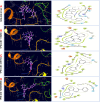






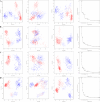
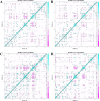
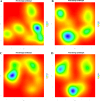

Similar articles
-
In silico identification of colchicine derivatives as novel and potential inhibitors based on molecular docking and dynamic simulations targeting multifactorial drug targets involved in Alzheimer's disease.J Biomol Struct Dyn. 2024;42(21):11555-11573. doi: 10.1080/07391102.2023.2263586. Epub 2023 Oct 11. J Biomol Struct Dyn. 2024. PMID: 37822182
-
Potential Azo-8-hydroxyquinoline derivatives as multi-target lead candidates for Alzheimer's disease: An in-depth in silico study of monoamine oxidase and cholinesterase inhibitors.PLoS One. 2025 Jan 30;20(1):e0317261. doi: 10.1371/journal.pone.0317261. eCollection 2025. PLoS One. 2025. PMID: 39883631 Free PMC article.
-
Identification of Natural Compounds of the Apple as Inhibitors against Cholinesterase for the Treatment of Alzheimer's Disease: An In Silico Molecular Docking Simulation and ADMET Study.Nutrients. 2023 Mar 24;15(7):1579. doi: 10.3390/nu15071579. Nutrients. 2023. PMID: 37049419 Free PMC article.
-
Recent Studies on Heterocyclic Cholinesterase Inhibitors Against Alzheimer's Disease.Chem Biodivers. 2025 Apr;22(4):e202402837. doi: 10.1002/cbdv.202402837. Epub 2024 Dec 3. Chem Biodivers. 2025. PMID: 39587940 Review.
-
Butyrylcholinesterase Protein Ends in the Pathogenesis of Alzheimer's Disease-Could BCHE Genotyping Be Helpful in Alzheimer's Therapy?Biomolecules. 2019 Oct 9;9(10):592. doi: 10.3390/biom9100592. Biomolecules. 2019. PMID: 31601022 Free PMC article. Review.
References
-
- Masters, C. L. et al. Alzheimer’s disease. Nat. Rev. Dis. Primers1, 1–18 (2015). - PubMed
-
- Roy, N., Hassan, A.-M., Alom, R., Rajib, Md. H. R. & Al-Mamun, K. A. The situation of Alzheimer’s disease in Bangladesh: Facilities, expertise, and awareness among general people. J. Neurol. Disord.8, 1–7 (2020).
MeSH terms
Substances
LinkOut - more resources
Full Text Sources
Medical

